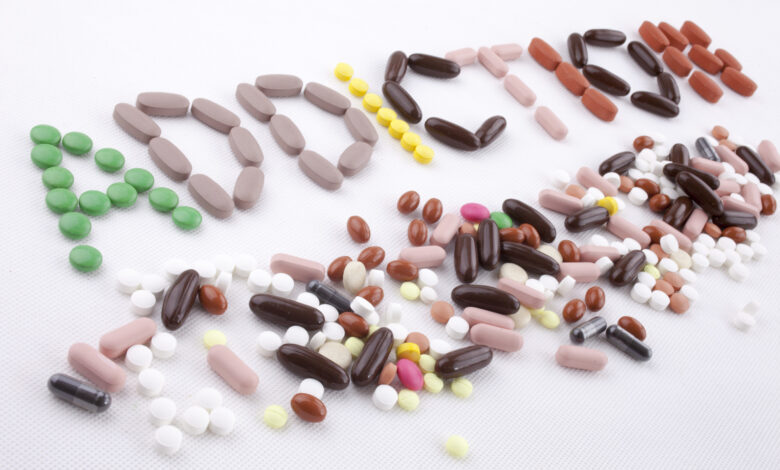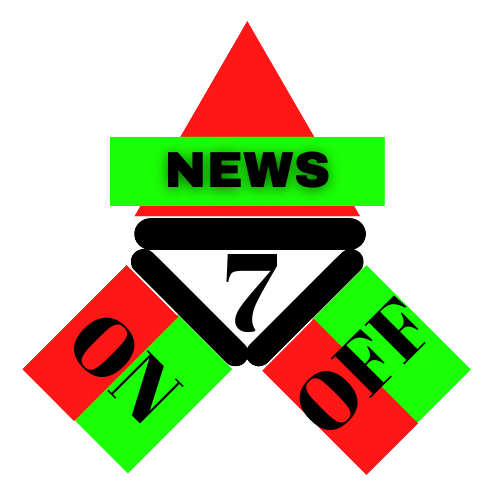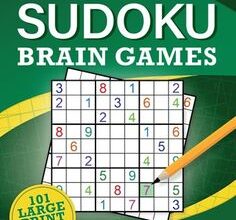Dopamine and Addiction: Understanding the Link

In 2021 alone, doctors diagnosed 20.4 million people in the U.S. with substance use disorder (SUD). These include addictions to cannabis, opioids, sedatives, and stimulants, to name a few.
However, the count above only applies to diagnoses made in 2021. It doesn’t include the number of people with SUD from previous years. Nor does it cover non-substance addictions like gambling.
Regardless of a person’s addiction, it’s a condition fueled by dopamine. So whether it’s a problem with alcohol, drugs, or gambling, it traces back to this chemical in the body.
But how exactly are dopamine and addiction disorders related? What is dopamine, anyway, and what roles does it play in the body?
To help educate our readers, we created this guide discussing dopamine and addictions. Keep reading to discover the truth and learn about the available addiction treatments.
What Is Dopamine?
Dopamine is a neurotransmitter, or chemical messenger, made in the brain. It carries messages from one nerve cell to another nerve, muscle, or gland cell.
Dopamine is vital in body functions like attention, feeding behaviors, memory, and movement. It also affects mood, playing a massive role in the body’s “reward center.”
As a player in the body’s reward center, dopamine makes a person happy. Its release gives a sense of pleasure. That pleasurable sensation also triggers an individual to feel motivated to do something.
Those are the primary reasons dopamine is a well-known “feel-good” hormone.
What Is Addiction?
Addiction is a medical illness defined as a brain disease. It’s a condition wherein one doesn’t have control over doing, taking, or using something. Such a lack of control reaches a point in which it could already cause harm or even death.
Alcohol intake, drug use, and smoking are the most common causes of addiction. However, the thrill of gambling can spur its development, too. Some people can also have an addiction to food and internet use.
How Are Dopamine and Addiction Connected?
The body’s reward system uses dopamine to evaluate activities a person does. It then determines which of these actions are pleasurable or rewarding.
Once the reward system regards an activity as rewarding, it acts as a motivator. It does so by releasing more dopamine whenever a person does something pleasurable. That makes an individual feel good and, thus, compelled to keep doing that action.
Unfortunately, that compulsion can drive a person to keep seeking that rewarding activity. It can force them to feel out of control if they don’t. That results in addiction.
Dopamine in Alcohol Addiction
Alcohol in the system triggers the brain’s reward system to release dopamine. That causes the production of euphoria, the so-called “buzzed” sensation. It can make a person feel warm, cozy, giddy, and perky.
The dopamine produced after drinking alcohol also activates memory circuits in the brain. Those bits then retain information about the pleasant experience associated with alcoholic beverages. Such memories can then make a person thirst for more alcohol.
Unfortunately, the more alcohol a person consumes, the less dopamine the brain makes. Likewise, the longer a person drinks alcohol, the worse the brain’s dopamine production. That can lead to feelings of misery, driving one to desire and drink even more alcohol to feel better.
Failure to break that cycle can result in alcohol addiction or alcohol use disorder (AUD).
Dopamine in Drug Use
Like alcohol, many drugs, such as cocaine and methamphetamine, cause a dopamine surge. As a result, their use also triggers euphoric feelings.
However, drugs can produce a much more significant amount of dopamine.
For example, cocaine can cause the release of up to 350 units of dopamine. With methamphetamine, that can go up to a staggering 1,250 units. Alcohol and sex can produce up to 200 units, but with a cheeseburger, it’s only about 100.
That’s why drug use can cause more intense euphoria and hallucinations. But unfortunately, drugs also drive people to use such substances repeatedly.
The tremendous amount of dopamine released with drug use also triggers reinforcement. It’s when the brain associates the effects of drugs with pleasurable experiences.
Reinforcement also teaches the brain to seek more drugs. After all, the brain has already established this act as a rewarding experience.
Over time, the brain and body’s reward threshold increases with continued drug use. Meaning they need more substances to achieve the same euphoric results.
Meanwhile, repeated drug use impairs the body’s ability to produce dopamine naturally. That results in the hastened “comedown,” “crash,” or “emotional low.” It’s the phase in which mood and energy deteriorate once the drug exits the bloodstream.
The most dangerous effect of long-term drug use is the risk of dying due to overdose. Even if a person’s tolerance increases, the body can’t take such high amounts of drugs. So instead, the organs fail.
Dopamine in Smoking Tobacco Cigarettes
According to the latest CDC data, an estimated 30.8 million people in the U.S. smoke tobacco cigarettes. As a result, over half (16 million) have a smoking-related disease.
Nicotine is the primary ingredient in tobacco that makes it so addictive. It’s addictive because, like alcohol and drugs, it causes the brain to release dopamine. It causes a buzzed feeling, stimulates the body, and speeds up blood pressure and heart rate.
Such effects of nicotine are as addictive as alcohol and drugs like cocaine and heroin.
One reason is that nicotine, over time, causes the brain to crave its effects. It also makes the brain and body more tolerant the more a person consumes it. As a result, someone with a nicotine dependency must smoke more to achieve the same “high.”
Nicotine dependency also triggers withdrawal symptoms in as short as 2 to 3 hours. These include unpleasant sensations like headaches, tense feelings, anxiety, depression, and restlessness. Some people may also feel hungry all the time and have trouble concentrating or sleeping.
The quickest way to ease those symptoms for many people who smoke is to smoke again. That’s why it’s so hard to quit smoking and eliminate addiction to nicotine.
Dopamine in Gambling
Gambling releases dopamine in the brain since it’s an exciting activity. However, it also has other potential rewards, such as enjoyment and winning money. Sometimes, such effects are enough to drive people to gamble even more.
For many others, it’s the desire to win back the money they’ve lost. This phenomenon is what you call “chasing losses.” Unfortunately, people chasing losses often develop gambling problems, also called pathological gambling.
Dopamine in Eating and Food Addiction
Before you eat, you feel hunger, which can sometimes be a gnawing, even painful sensation. To relieve yourself of such pain, you seek food. From the first bite to the time you finish your meal, your brain’s reward system releases dopamine.
In the example above, dopamine makes you feel good as it helps ease the painful feeling of hunger. From there, it gives you a sense of satisfaction, encouraging you to eat again the next time you feel hungry.
That’s not a problem because you need to eat to survive and stay healthy. However, it becomes one if the food you eat causes the release of dopamine in much higher amounts. These include junk food and sugar, two of the most addictive foods.
Sugar, which junk food mainly consists of, triggers the body to release a sudden surge of energy. That energy release, in turn, causes a “short-term high” again due to dopamine. Such a sensation can cause a person to feel perky, upbeat, and happy, which are all positive.
Unfortunately, that pleasurable experience also drives many to consume more sugar.
The problem is that sugar, especially the refined type, can be harmful in the long run. For starters, it can cause obesity. Obesity, in turn, contributes to chronic conditions such as diabetes and heart disease.
Dopamine and Internet Use
As internet penetration has increased, so has the number of people who feel addicted to it. That’s especially true for those who’ve developed an obsession with social media. As many as one in 10 Americans meet the criteria for having a social media addiction.
Social media can be addictive since, like alcohol and drugs, it can also release dopamine. That can happen when a person feels happy whenever someone else likes their post. It may also make them feel validated and, thus, joyful.
As a result, the brain can start associating social media use with the potential for rewards. That reinforces a person’s need to post more stuff online, hoping to get even more likes and followers.
What Else Happens Due to Dopamine Problems?
Withdrawal symptoms aside, too little or too much dopamine can damage the brain. For example, it can make a person more inclined to take risks or become addicted to other things. It can also result in mental health problems such as anxiety and depression.
A lack of or inefficient dopamine regulation can also injure neural pathways. When that happens, it can lead to other mental illnesses. Some examples are schizophrenia, bipolar disorder, attention-deficit/hyperactivity disorder, and obsessive-compulsive disorder.
Having too much dopamine also increases a person’s risk of being aggressive. It may lead to poor impulse control, too. Both factors can then give rise to other behavioral disorders and addictions.
Can Dopamine Regulation Help Treat Addiction?
Since dopamine is at the center of addictions, regulating it may help treat the disorders.
However, the first step is to address the root cause of the dopamine imbalance. For example, medical detox is often necessary if it’s an addiction to alcohol, drugs, or tobacco.
Medical detox (detoxification) is a doctor-supervised procedure in residential treatment for addiction. It aims to remove dopamine-releasing substances from the bloodstream.
A doctor must be present because medical detox can trigger severe withdrawal symptoms. The process can also take several days, even weeks.
After detoxification, doctors may then prescribe patients with dopamine antagonists. These drugs help regulate dopamine and return them to healthy levels. They work by blocking dopamine receptors, which, in turn, impedes dopamine’s effects.
Conversely, dopamine agonists may also help treat dopamine deficiency resulting from addictions. As long as administered in the correct dose, they can help boost dopamine levels.
What About for Non-Substance Addictions?
Non-substance addictions include gambling, food, internet use, sex, and work. Psychotherapy, or talk therapy, is often their first line of treatment. The most common form used is cognitive behavioral therapy (CBT).
Medications can help, but the ones often used are mood stabilizers and antidepressants. Sometimes, narcotic antagonists (those used in drug addictions) may also help.
What Are Other Treatments for Addiction?
Contingency management (CM) is a therapy that mimics dopamine’s effects. It reinforces positive behavior, for example, maintaining sobriety or staying away from casinos. It does so by “rewarding” healthy achievements with prizes.
Addiction recovery may also involve getting into a 12-step program. It’s a group therapy where participants must recognize, face, and accept their addiction. Through acceptance, members realize the negativities and consequences of their addiction.
Other medications can also treat addictions by helping minimize addictive behaviors. An example is lofexidine, a drug recently approved by the FDA to curb opioid cravings. It also helps ease withdrawal symptoms in people battling opioid abuse.
Another medication that can help is acamprosate, which targets drinking behaviors. Aside from helping regulate dopamine, it also reduces the urge to drink. That can then help people with AUD focus on their sobriety and recovery.
Addiction Is Treatable
Remember: Dopamine and addiction go hand in hand, which is why the latter is a disorder. It isn’t a moral failure, weakness, or lack of willpower. Instead, it’s an illness caused by changes in the brain due to substances or activities.
Since addiction is a disorder, it’s also treatable. However, recovery can only start if a person accepts they need help with their condition. Thus, if you or a loved one has an addiction, please consider seeking help ASAP.
For other health and wellness guides like this, check out our other news and blog posts.




